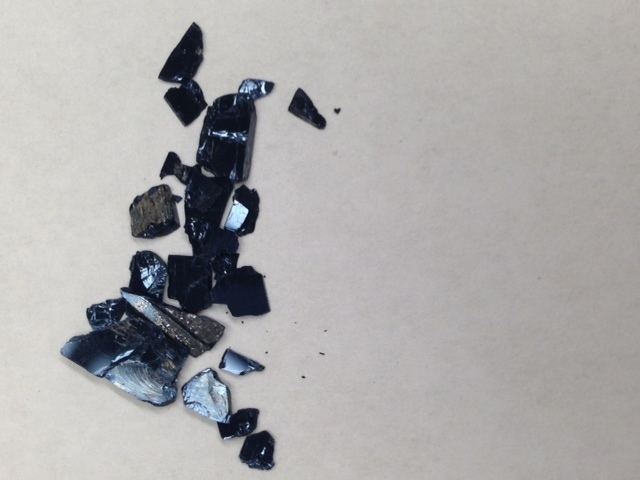 | ||
In chemistry, molybdenum bronze is a generic name for certain mixed oxides of molybdenum with the generic formula A
xMo
yO
z where A may be hydrogen, an alkali metal cation (such as Li+, Na+, K+), and Tl+. These compounds form deeply coloured plate-like crystals with a metallic sheen, hence their name. These bronzes derive their metallic character partially occupied 4d-bands. The oxidation state in K0.28MoO3 are K+1, O2−, and Mo+5.62. MoO3 is an insulator, with an unfilled 4d band.
Contents
These compounds have been much studied since the 1980s due to their markedly anisotropic electrical properties, reflecting their layered structure. The electrical resistivity can vary considerably depending on the direction, in some cases by 200:1 or more. They are generally non-stoichiometric compounds. Some are metals and some are semiconductors.
Preparation
The first report of a "molybdenum bronze" was by Alfred Stavenhagen and E. Engels in 1895. They reported that electrolysis of molten Na
2MoO
4 and MoO
3 gave indigo-blue needles with metallic sheen, which they analysed by weight as Na
2Mo
5O
7. The first unambiguous synthesis of alkali molybdenum bronzes was reported only in 1964, by Wold and others. They obtained two potassium bronzes, "red" K
0.26MoO
3 and "blue" K
0.28MoO
3, by electrolysis of molten K
2MoO
4+MoO
3 at 550 °C and 560 °C, respectively. Sodium bronzes were also obtained by the same method. It was observed that at a slightly higher temperature (about 575 °C and above) only MoO
2 is obtained.
Another preparation technique involves crystallization from the melt in a temperature gradient. This report also called attention to the marked anisotropic resistivity of the purple lithium bronze Li
0.9Mo
6O
17 and its metal-to-insulator transition at about 24 K.
Hydrogen bronzes H
xMoO
3 were obtained in 1950 by Glemser and Lutz, by ambient-temperature reactions. The hydrogen in these compounds can be replaced by alkali metals by treatment with solutions of the corresponding halides. Reactions are conducted in an autoclave at about 160 °C.
Classification
Molybdenum bronzes are classified in three major families:
0.33MoO
3, that is, AMo
3O
9:
0.33MoO
3 Reau and others.
0.26Mo
1.02O
3 or K
0.3MoO
3
0.33MoO
3
0.23Mo
1.01O
3 a semi-conductor.
0.30MoO
3, that is, A
3Mo
10O
30. Their the electronic properties generally do not depend on the metal A.
0.28Mo
1.02O
3 or K
0.3MoO
3
0.3MoO
3
0.3MoO
3
0.9Mo
6O
17. Their the electronic depend strongly on the metal A.
0.9Mo
6O
17
0.9Mo
6O
17
0.9Mo
6O
17
0.9Mo
6O
17
0.9Mo
6O
17
The hydrogen molydbdenum bronzes have similar appearances but different compositions:
xMoO
3, 0.23 < x < 0.4
xMoO
3, 0.85 < x < 1.4
xMoO
3, 1.55 < x < 1.72
2MoO
3 or MoO
2.H
2O
Other molybdenum bronzes with anomalous electrical properties have been reported, which do not fit in these families. These include
4O
6
xMoO
2−δ.
